Breathing new life into the past: Kuala Lumpur to spend $180m on conservation and green corridors
Sign up now: Get ST's newsletters delivered to your inbox

A worker carefully restores the facade of the Sultan Abdul Samad Building as part of the Warisan KL heritage revival project.
ST PHOTO: HAZLIN HASSAN
Follow topic:
KUALA LUMPUR - Malaysia is pumping at least RM600 million (S$180 million) into efforts to restore its crumbling heritage buildings and build walking corridors in downtown Kuala Lumpur, in a bid to revive the capital city’s historic zone.
The Warisan KL, or KL Heritage, initiative, is spearheaded by sovereign wealth fund Khazanah Nasional through its subsidiary Think City. It comprises 10 flagship projects within a 20 sq km zone that range from architectural conservation to green corridors.
“A city must be fresh with interesting and attractive physical features that align with technological advancement and change in times,” said Prime Minister Anwar Ibrahim on April 25, as he launched the initiative at Kuala Lumpur City Hall on April 25. “It must also remain deeply rooted in tradition and culture,” he added.
At the heart of this effort is the RM600 million restoration of Carcosa Seri Negara – a storied colonial estate built between 1898 and 1913, later converted into a five-star hotel that often hosted visiting dignitaries – and the Sultan Abdul Samad Building, a 128-year-old Moorish-inspired complex that once housed the British colonial administration.
The late Queen Elizabeth II and Prince Philip stayed at the Carcosa Seri Negara hotel during the 1989 Commonwealth Heads of Government Meeting held in Kuala Lumpur.
Datuk Seri Anwar recalled that, when he was Umno Youth chief (1982-1987), he had joined the push for the British government to return Carcosa Seri Negara to Malaysia – a goal that was achieved in 1987 – which he described as a “small contribution” on his part.
Both sites are shuttered for restoration works, which are in progress. While future plans for the two projects are still up in the air, there have been preliminary discussions about mixed-use development projects incorporating a gallery, museum, shops and hotel.
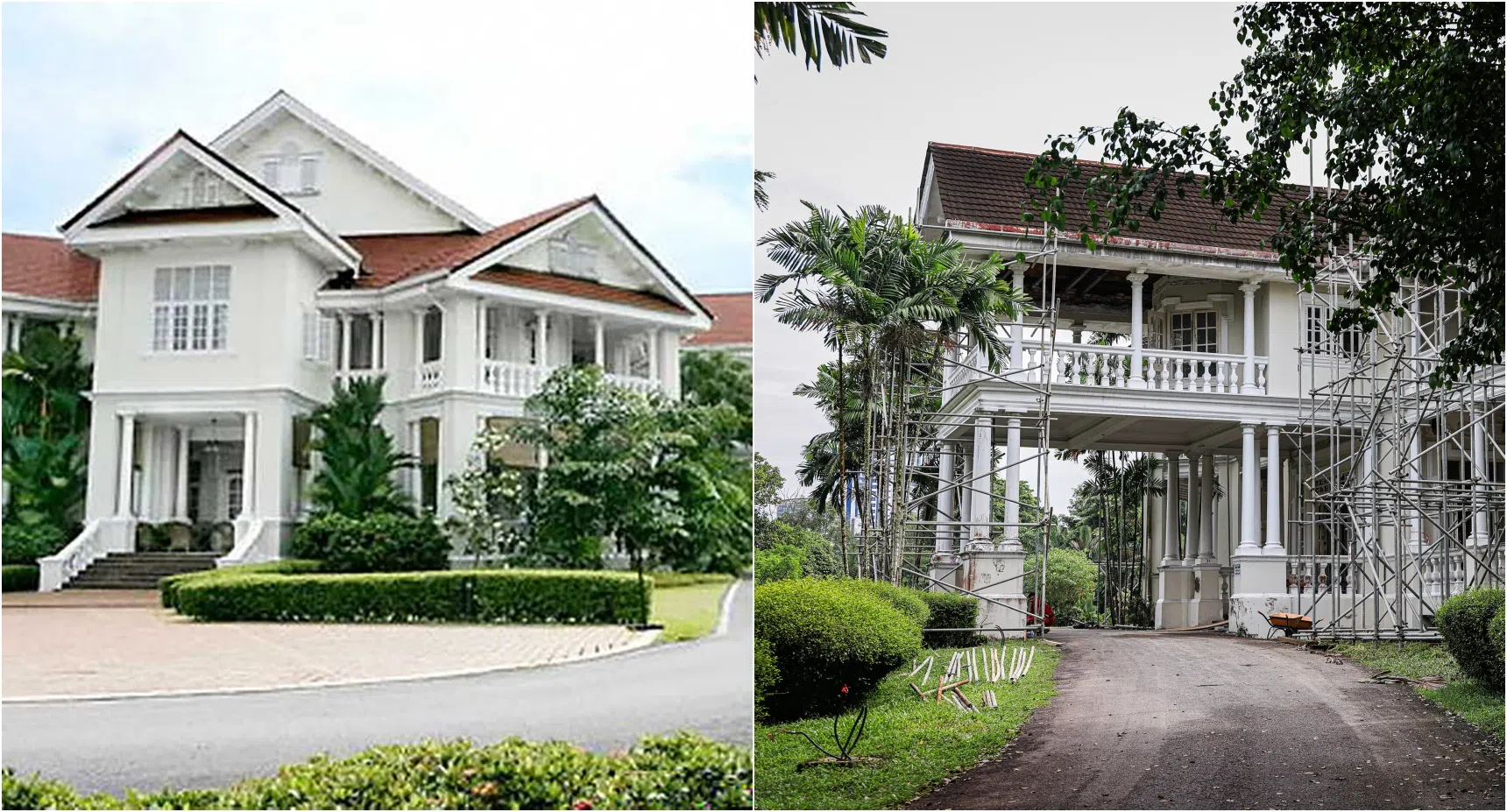
The late Queen Elizabeth II and Prince Philip stayed at the Carcosa Seri Negara hotel during the 1989 Commonwealth Heads of Government Meeting held in Kuala Lumpur.
PHOTOS: CARCOSA SERI NEGARA HOTELS KUALA LUMPUR, THINK CITY
But the effort is not just about preserving old buildings, said Think City managing director Hamdan Majeed.
“Heritage is what you inherit,” he told reporters at a briefing on April 15. “We want to improve the quality of living, enhance the resilience of the city and its attractiveness.”
The plan to rejuvenate downtown Kuala Lumpur is also timed for Visit Malaysia 2026, which will draw in more tourists.
After nearly six years of closure, the government is planning to reopen Carcosa Seri Negara to host top-ranking Asean delegates later in the year. As chair of the regional group in 2025, Malaysia will be hosting the Asean summits in May and October.
“Hopefully, the restoration of Carcosa Seri Negara will be completed by this July and we can introduce a quaint programme like high tea to introduce the heritage building to foreign delegations,” said Dr Zaliha Mustafa, Minister in the Prime Minister’s Department (Federal Territories), in a Facebook post in February after inspecting the site.
Australian paramedic Paul Francis, who was visiting the Sultan Abdul Samad Building on a stopover, was impressed by the facade. The building features a landmark clock tower and once housed the Federal and Appeals court.
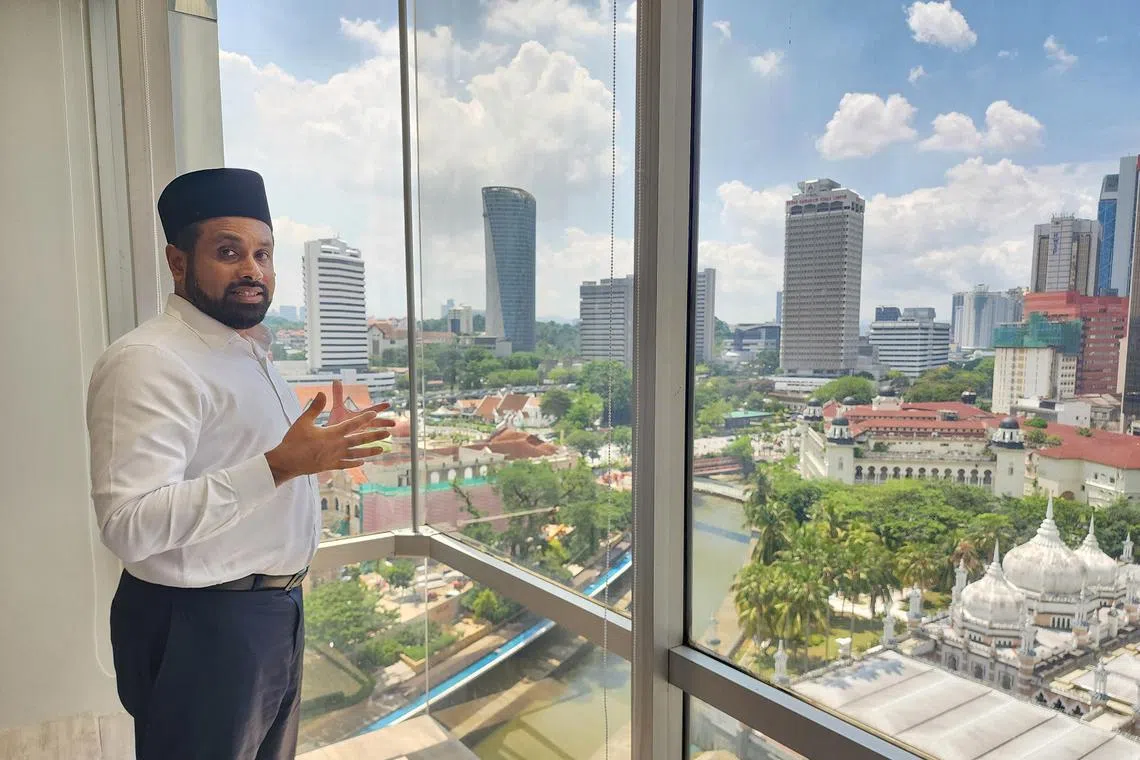
Think City managing director Hamdan Majeed showing the view of downtown Kuala Lumpur from his office.
ST PHOTO: HAZLIN HASSAN
“It’s cool, I think all history is worth preserving so younger generations can see what the past was like,” Mr Francis told The Straits Times, adding that he had been speculating about the architecture and whether it had been built by the British. “It’s got a bit of an Arabic, Islamic look,” he added.
Indonesian banker Dewa Nugraha, who was walking nearby in Dataran Merdeka or Independence Square, said: “It is very eye-catching to me. I think it is a good idea to refurbish old buildings because it can attract more tourists.”
Just behind the Sultan Abdul Samad Building is where two major Kuala Lumpur rivers, Sungai Gombak and Sungai Klang, meet. This was where, according to popular legend, the capital city got its name. Kuala Lumpur in Malay means muddy estuary.
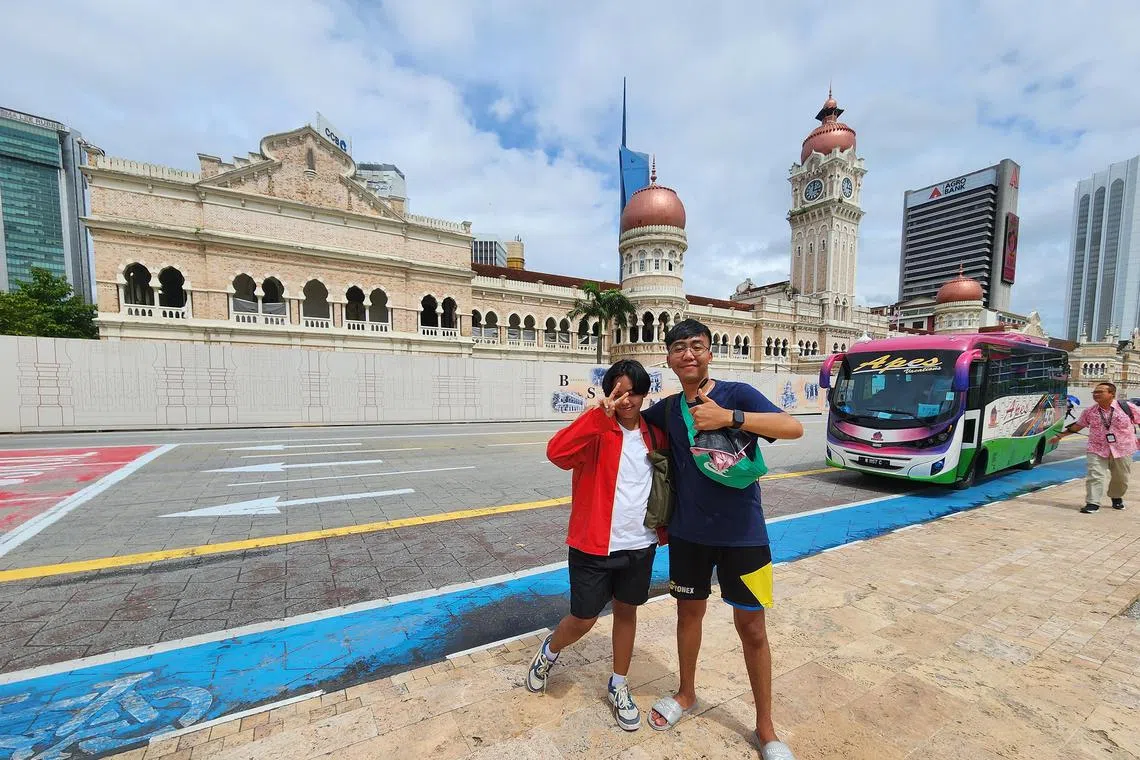
Indonesian tourists Dewa Nugraha and Nay posing in front of the Sultan Abdul Samad Building.
ST PHOTO: HAZLIN HASSAN
Another highlight of the Warisan KL plan is a proposed green connector network that will link historic sites, parks and civic spaces, enabling people to walk safely through the city.
“My dream is for everyone to walk seamlessly, with no barriers, and then it’s nice to walk and to bring your family into the city,” said Kuala Lumpur Mayor Maimunah Mohd Sharif at a media briefing on April 22.
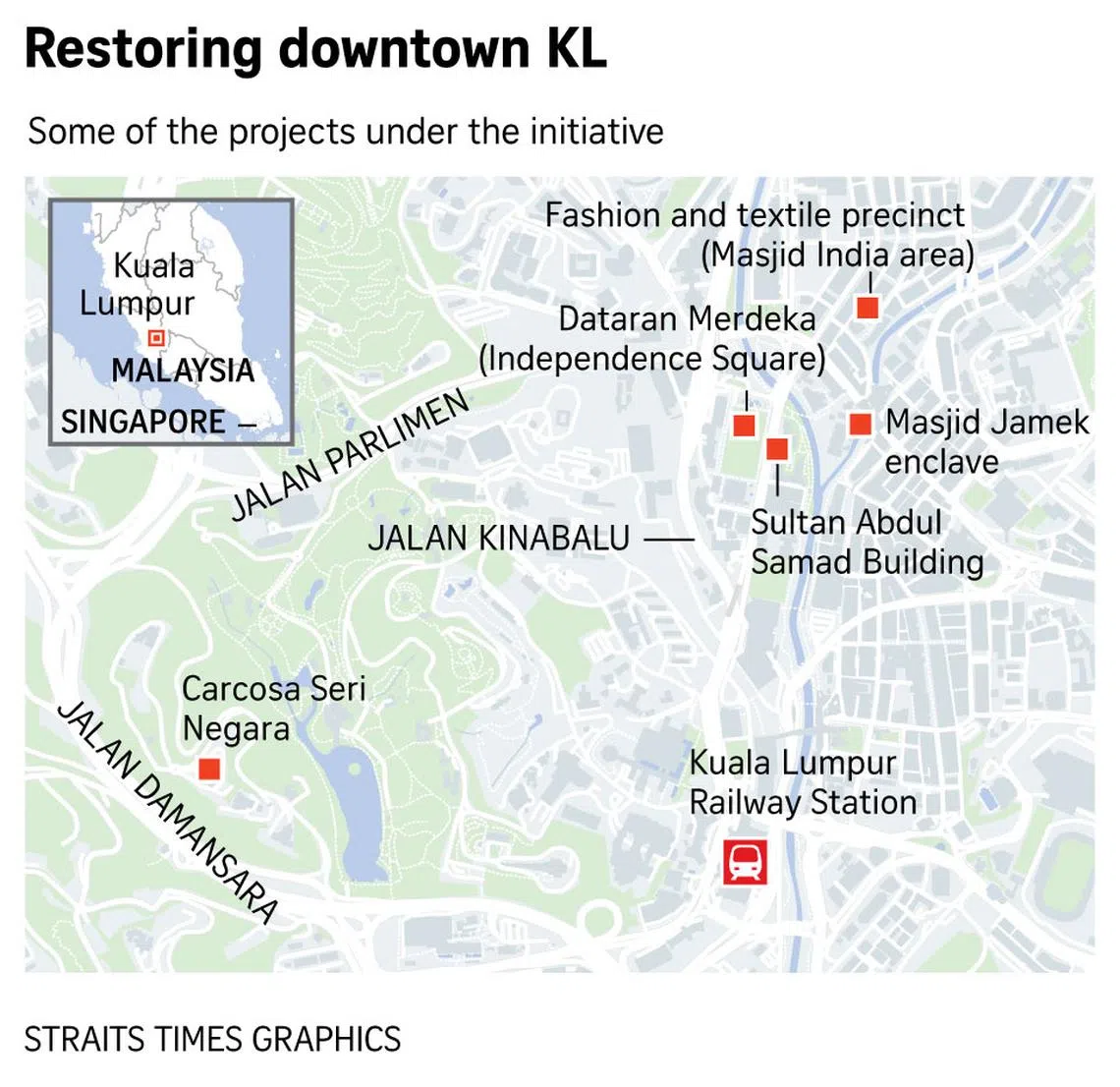
Founder of Free Walk Kuala Lumpur Unscripted, Ms Jane Rai, who has conducted walking tours in the capital for over three decades, said: “I welcome the government’s efforts to restore heritage buildings like the Sultan Abdul Samad Building. It’s such an iconic landmark. I truly look forward to bringing visitors again once the restoration is complete – especially if the interior is returned to its former glory.”
Other flagship projects under the Warisan KL initiative include the Kuala Lumpur Railway Station and the Masjid Jamek-Masjid India area in the old quarters of the capital. Jalan Masjid India was the site of an incident in August 2024 in which a tourist fell into a sinkhole and was never found.
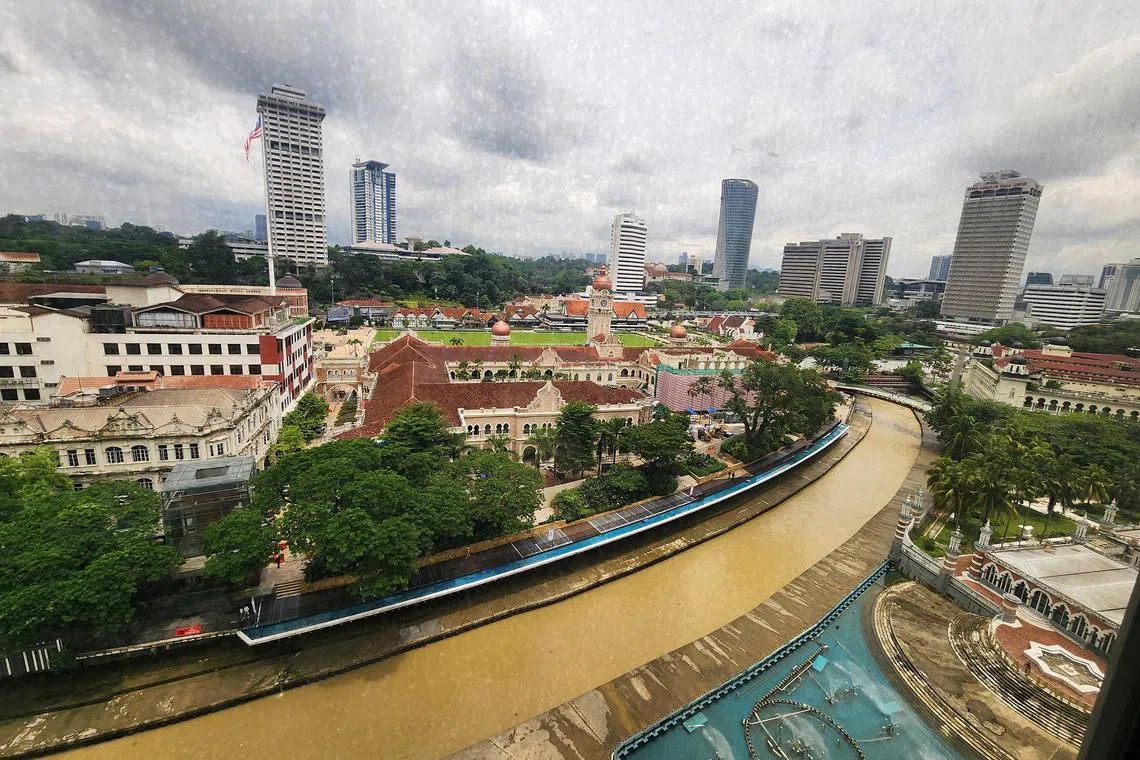
The historic Sultan Abdul Samad Building is temporarily closed for refurbishment.
ST PHOTO: HAZLIN HASSAN
Datuk Hamdan noted that these improvements are attracting both public and private investment.
“We anticipate overall investment to be in the billions of ringgit over the next few years,” he said at the April 22 briefing, though exact figures remain fluid due to the growing number of stakeholders joining the effort.
Datuk Seri Maimunah emphasised that these projects are not merely cosmetic. “We are... also trying to strengthen the meaning and the identity of our city,” she said.
“Historic Kuala Lumpur is a living city. It is not a city that is an archaic museum piece,” Mr Hamdan pointed out.
Hazlin Hassan is Malaysia correspondent at The Straits Times.


